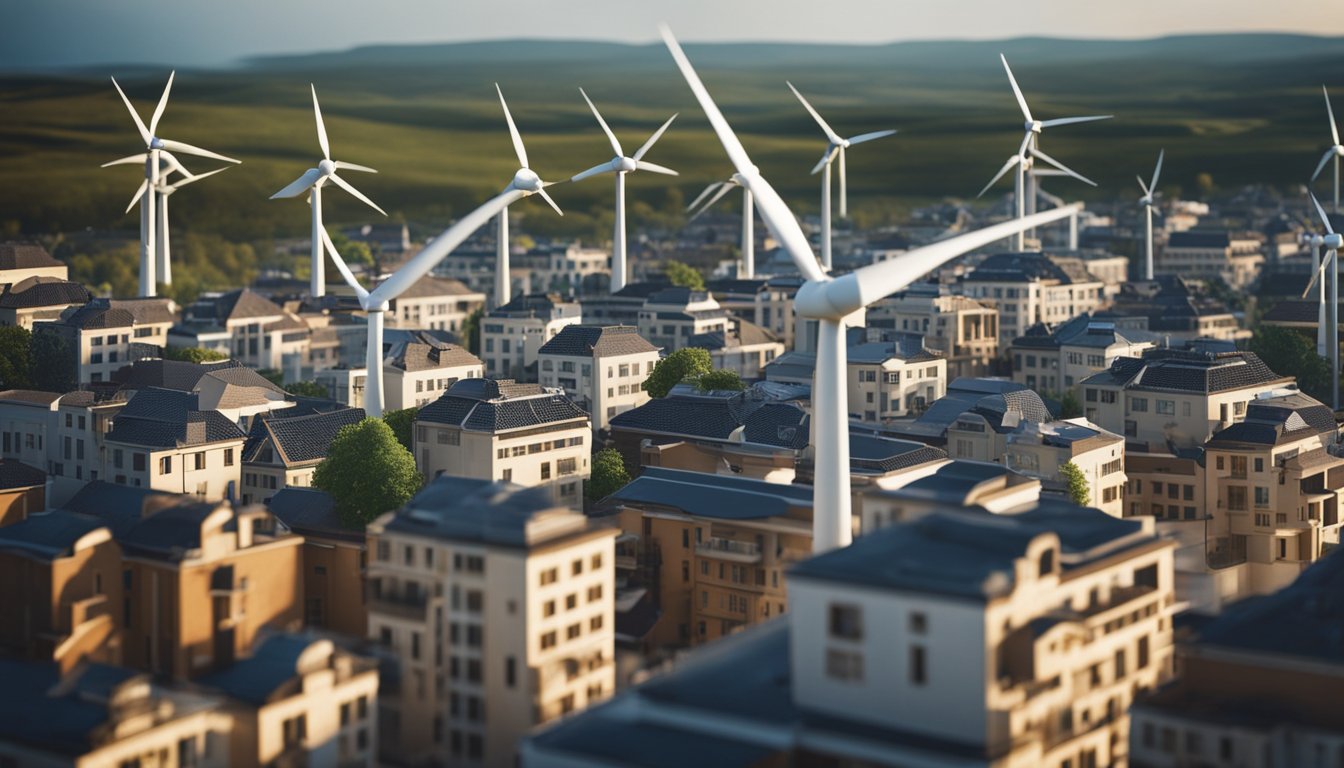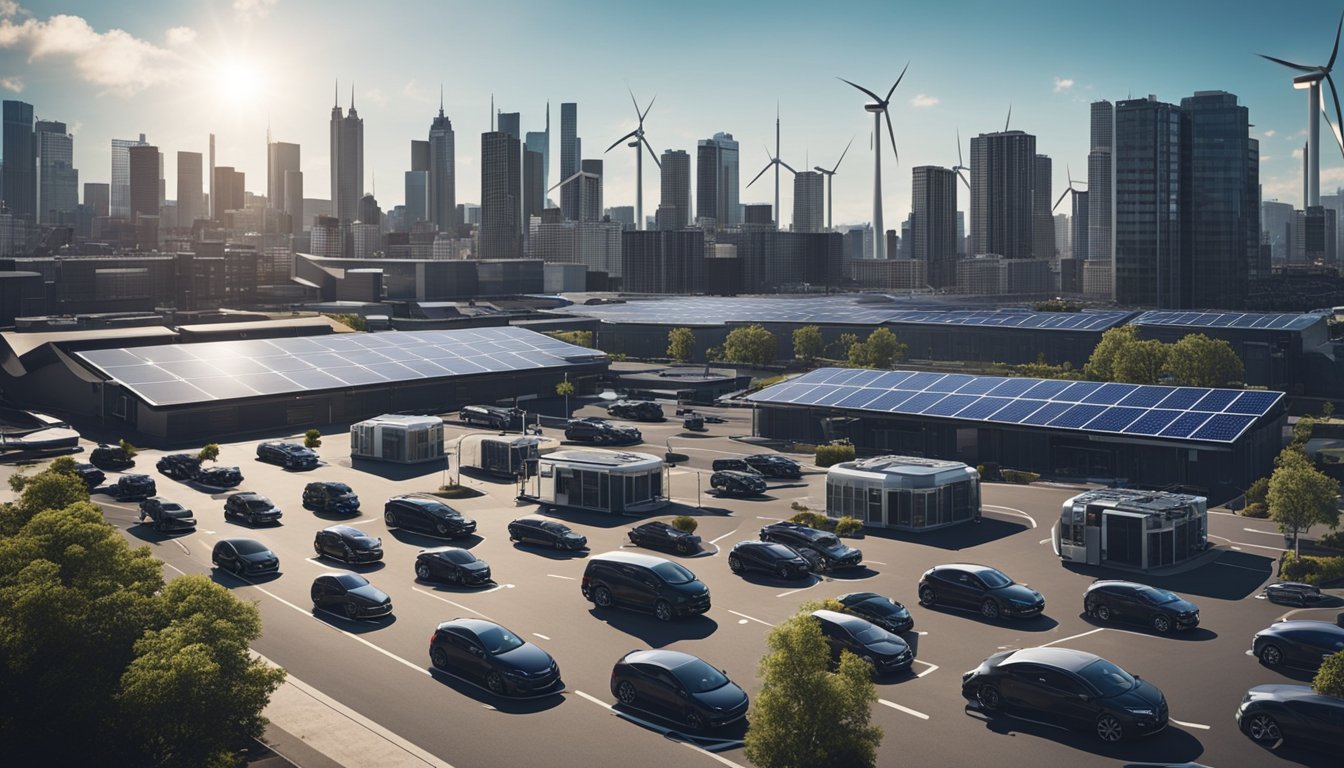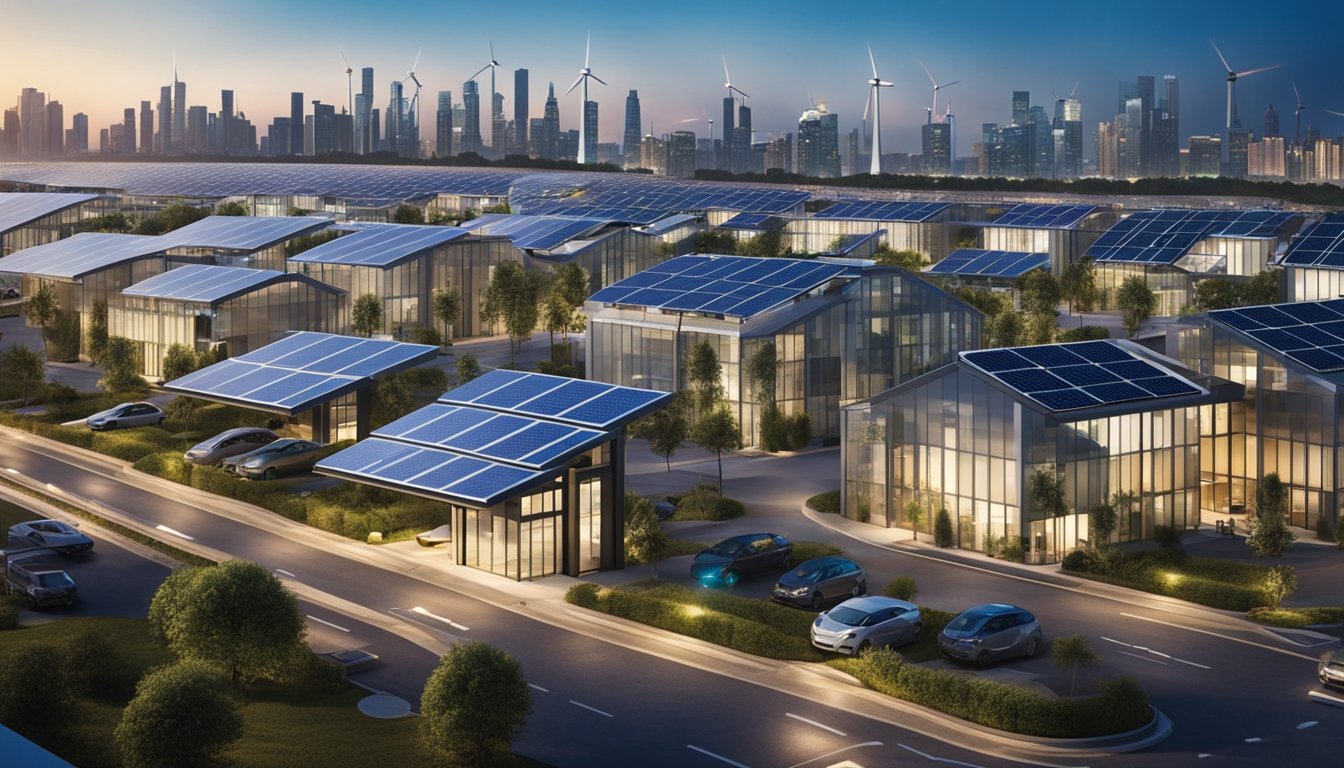Late updated: 18 Feb 2025 11:02
Written by: Eleanor Hartman
Renewable Energy Solutions For Urban UK Areas: Transforming the Cityscape
Cities represent the future of renewable energy transformation in the UK. With urban areas accounting for a significant portion of energy consumption and carbon emissions, they're poised to lead the move towards sustainability. Renewable energy solutions such as solar, wind, and biomass are now at the forefront of efforts to achieve net zero carbon emissions in these densely-populated regions.

Our focus on renewable energy isn't just a response to climate change. It's also central to enhancing urban resilience and improving the quality of life for residents. Innovating energy systems in cities necessitates a holistic strategy that incorporates sustainable mobility, smart energy distribution, and localised energy generation.
It's imperative that we not only consider the technical aspects of these solutions but also engage communities throughout the process. The collective effort of stakeholders, from citizens to policymakers, is crucial for integrating renewable energy effectively into urban infrastructures.
Key Takeaways
- Cities are essential in driving the UK's renewable energy transition.
- Renewable solutions reduce emissions and improve quality of life.
- Community engagement is vital for successful integration.
Renewable Energy Systems in Urban UK Areas
Urban energy strategies in the UK are evolving, spurred by the pressing need for sustainable and efficient energy solutions. These systems are gradually being integrated through solar power, wind energy, bioenergy, district heating, smart grids, and energy storage solutions.
Analysis of Urban Energy Consumption
A major focus is understanding how energy is consumed in UK cities. Urban energy systems are complex, often characterised by high energy use due to population density and economic activities. This creates both challenges and opportunities for incorporating renewable energy systems. Knowing where and how energy is used helps tailor solutions that maximise energy efficiency and reduce carbon emissions. Targeted policies and technologies are crucial in managing and transforming urban energy consumption effectively.
The Role of Solar Panels and Wind Turbines
Solar panels and wind turbines are central to the renewable energy strategy in urban areas. Solar energy has seen increased adoption on rooftops and public buildings, thanks to advances in photovoltaic technology. Wind power, though less common in densely packed urban areas, is harnessed more effectively in suburban and coastal locations. The efficiency of these systems depends on local conditions, incentivising customised approaches to maximise energy harvest and integration into the existing grid infrastructure.
Emerging Trends in Bioenergy and District Heating
Bioenergy is gaining traction through the utilisation of organic waste. Urban areas are exploring biogas production and biomass fuel as alternatives. This not only reduces waste but also provides a continuous energy supply. District heating systems, which distribute heat generated in a central location for residential and commercial heating, are expanding. They offer economies of scale by efficiently serving large populations. These systems are essential for reducing reliance on fossil fuels in heating applications.
Significance of Energy Storage and Smart Grids
Energy storage and smart grid technology are indispensable in managing variability and ensuring reliable energy supply. Battery storage systems can store excess power from renewables for use during peak demand. Smart grids, with advanced monitoring capabilities, optimise energy distribution and balance supply with demand. These technologies are critical in enhancing grid resilience and ensuring seamless integration of renewable energies. Collaborating on developing these systems, we ensure urban areas are equipped for future energy needs.
Strategies for Integrating Renewable Energy in Urban Planning

To effectively integrate renewable energy in the urban UK landscape, we must focus on sustainable infrastructure design, transitioning to alternative energy sources, supporting electric vehicle usage, and establishing clear energy targets. These key areas facilitate the shift towards a resilient and environmentally conscious urban infrastructure.
Designing Sustainable Urban Infrastructure
Incorporating renewable energy solutions requires thoughtful urban infrastructure design. Employing solar panels, wind turbines, and energy-efficient building materials can significantly reduce carbon footprints. Planners should prioritise mixed-use developments that reduce transport energy consumption and promote accessible public transport systems.
Green spaces and urban forests play essential roles, as they enhance land use efficiency and contribute to carbon sequestration. By utilising smart technology to monitor energy consumption, cities can optimise energy use, ensuring sustainability is embedded in urban designs.
Transitioning to Renewable Energy Sources
The shift to renewable energy in urban areas is critical for meeting climate goals. By investing in solar, wind, and hydroelectric power, cities can reduce dependence on fossil fuels and decrease greenhouse gas emissions. Implementing community energy initiatives allows for local energy production and consumption, improving energy resilience.
Encouraging local governments to adopt and incentivise these renewable energy sources enhances the urban energy landscape. This increase in energy awareness can facilitate broader adoption of renewables, leading to a more sustainable urban future.
Supporting Electric Vehicle Adoption
Encouraging electric vehicle (EV) use in urban settings can significantly cut emissions. Installing fast-charging stations throughout cities and offering subsidies for EV purchase will support this transition. Reliable infrastructure for EVs ensures a seamless shift from traditional vehicles, fostering cleaner city environments.
Local authorities can introduce low-emission zones to promote electric vehicle use further. Fleet electrification, including public transport and delivery services, is another strategy to reduce urban emissions and encourage widespread EV adoption among residents.
Setting and Achieving Renewable Energy Targets
Establishing clear and ambitious renewable energy targets guides urban areas toward sustainability. Targets aligned with IPCC recommendations can drive significant change in emission reductions. Cities should set short-term and long-term goals, regularly monitoring progress and adjusting strategies as needed.
Public-private partnerships provide essential support for achieving these targets, as shared resources and expertise pave the way for innovative solutions. By collaboratively working towards common goals, urban areas can enhance their renewable energy integration and contribute positively to global climate efforts.
Frequently Asked Questions

In the UK, urban areas are at the forefront of integrating renewable energy. The focus is on utilising diverse technologies and strategies to overcome challenges and maximise government support while observing the transformation of cities leading in this green shift.
What are the primary renewable energy technologies currently employed in UK urban areas?
Urban areas in the UK primarily utilise solar panels, wind turbines, and biomass energy. Solar power is a significant contributor due to its flexibility and scalability. Wind turbines are also increasingly integrated, where feasible, to harness Britain's abundant natural wind resources.
How is the UK addressing the challenges of transitioning to clean energy within its cities?
The UK is actively promoting infrastructure enhancements and investments to enable a shift towards cleaner energy sources. Cities are encouraged to develop smart grids and energy storage solutions. These strategies are aimed at overcoming barriers like grid capacity issues and ensuring a reliable energy supply.
What strategies are UK cities implementing to increase renewable energy usage?
Cities across the UK are adopting energy conservation measures and retrofitting buildings to be more energy efficient. Community energy projects are gaining traction, allowing local residents to invest in and benefit from renewable power. Measures such as these are essential for bolstering urban renewable energy usage.
How does the UK government support urban renewable energy projects?
The UK government offers various incentives including grants and subsidies to promote renewable energy adoption in urban areas. Policy frameworks are in place to encourage investment in sustainable energy projects. These measures provide financial relief and stimulate growth in the renewable sector.
Which cities in the UK are leading in renewable energy adoption and what approaches are they taking?
Cities like London, Bristol, and Glasgow are at the forefront of renewable energy initiatives. They are implementing ambitious projects such as solar panel installations on public buildings and developing localised wind energy solutions. These cities are also engaging residents through community-based renewable initiatives.
What impact has renewable energy had on the UK's urban energy landscape?
The integration of renewable energy has led to a significant reduction in carbon emissions in UK cities. It has enhanced energy security and reduced dependency on fossil fuels. This transition is transforming urban environments, making them more sustainable and resilient against climate change.